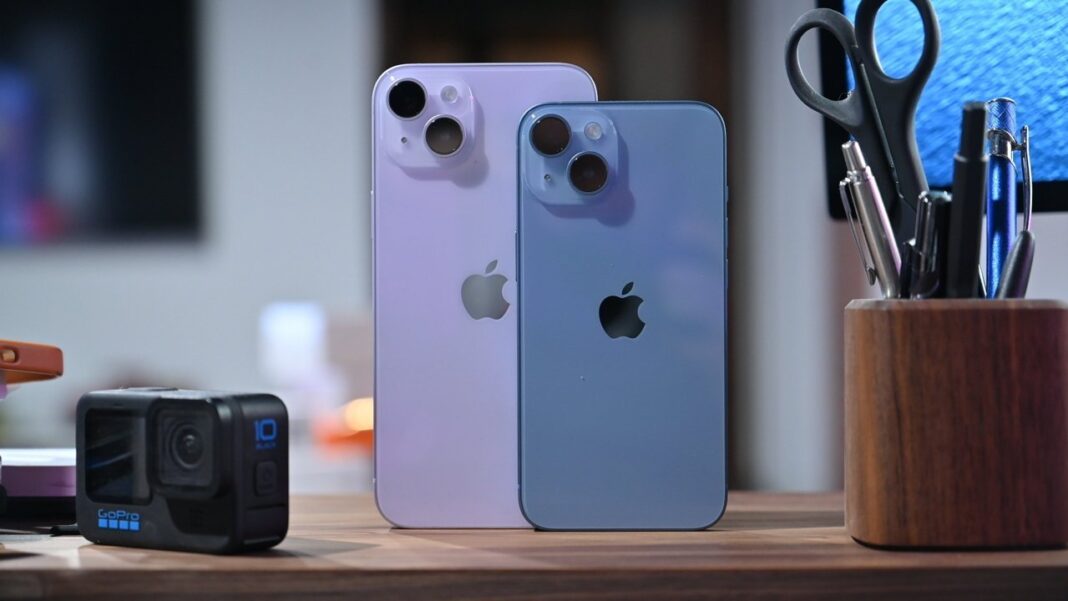iPhone 14 and iPhone 14 Plus
Apple has recently made a significant move in the European Union by pulling the iPhone 14 and the third-gen iPhone SE from its online store to comply with incoming charger regulations. This decision has sparked discussions and speculations among tech enthusiasts and Apple fans alike. Let’s delve deeper into this development and explore the implications it may have on the tech industry and consumers.
The Story So Far:
Apple’s decision to remove the iPhone 14 and iPhone SE from its online store in several EU countries has left many wondering about the reasons behind this move. Reports suggest that this action is in response to the common charger directive set to come into effect in 2025. This directive aims to standardize charging ports across devices to reduce e-waste and make it easier for consumers to find compatible chargers. By preemptively discontinuing sales of Lightning-equipped models, Apple is aligning with these regulations and preparing for the future of technology.
Review:
The removal of the iPhone 14 and iPhone SE from the Apple Store has raised questions about the impact on consumers and the tech market. While the directive does not ban the sale of older models with Lightning ports, it does restrict the availability of newer devices designed after the passing of the mandate. This shift may prompt consumers to explore alternative options or consider purchasing older models that are still compatible with their existing accessories.
In countries where sales of the iPhone 14 and iPhone SE continue, the future remains uncertain as governments consider adopting similar regulations. The tech industry is at a crossroads, balancing innovation with sustainability and consumer convenience. As Apple navigates these changes, it sets a precedent for other tech giants to follow suit and adapt to evolving regulatory landscapes.
Conclusion:
The removal of the iPhone 14 and iPhone SE from the Apple Store marks a pivotal moment in the tech industry’s journey towards sustainability and standardization. As consumers adapt to these changes, they may look to older models or explore alternative brands that align with their values and preferences. Apple’s decision reflects a broader shift towards eco-conscious practices and consumer-centric solutions in the tech sector.
Frequently Asked Questions:
1. What prompted Apple to remove the iPhone 14 and iPhone SE from its online store?
– Apple removed the models to comply with the upcoming common charger directive in the EU.
2. Will consumers still be able to purchase the iPhone 14 and iPhone SE in other regions?
– Yes, the models are still available in some countries where the directive does not apply.
3. How will the common charger directive impact the tech industry as a whole?
– The directive aims to standardize charging ports to reduce e-waste and improve consumer convenience.
4. Can consumers continue to use Lightning-equipped devices after the directive takes effect?
– Yes, existing devices will still be functional, but future accessories may require USB-C compatibility.
5. What implications does Apple’s decision have for other tech companies?
– Apple’s move sets a precedent for other companies to adopt eco-friendly practices and align with regulatory changes.
6. Are there any exemptions to the common charger directive for specific devices?
– The directive primarily targets smartphones, tablets, and headphones, aiming to streamline charging solutions for consumers.
7. How will consumers react to the removal of the iPhone 14 and iPhone SE from the Apple Store?
– Consumers may explore alternative options or consider purchasing older models that are still compatible with their accessories.
8. What considerations should consumers keep in mind when choosing a new device?
– Consumers should consider factors such as compatibility, sustainability, and long-term usability when selecting a new device.
9. Will Apple release new models with USB-C ports in the future?
– Apple’s future product lineup may feature devices with USB-C ports to align with regulatory requirements and consumer preferences.
10. How can consumers stay informed about the latest developments in the tech industry?
– Following reputable tech news sources and staying updated on regulatory changes can help consumers make informed decisions about their tech purchases.
Tags:
iPhone 14, iPhone SE, Apple, EU regulations, common charger directive, tech industry, sustainability, consumer convenience, eco-friendly practices.

